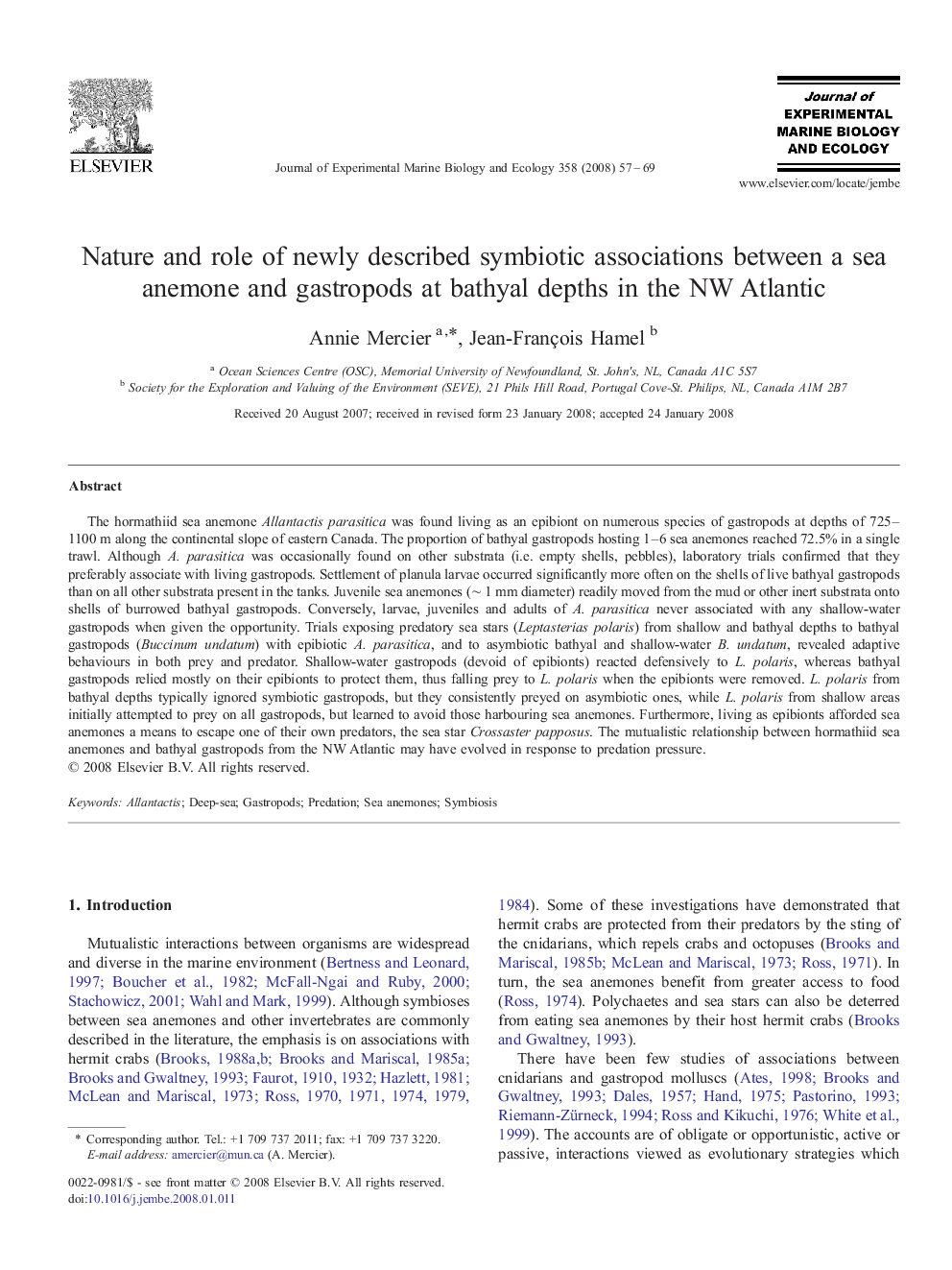| کد مقاله | کد نشریه | سال انتشار | مقاله انگلیسی | نسخه تمام متن |
|---|---|---|---|---|
| 4397436 | 1305887 | 2008 | 13 صفحه PDF | دانلود رایگان |

The hormathiid sea anemone Allantactis parasitica was found living as an epibiont on numerous species of gastropods at depths of 725–1100 m along the continental slope of eastern Canada. The proportion of bathyal gastropods hosting 1–6 sea anemones reached 72.5% in a single trawl. Although A. parasitica was occasionally found on other substrata (i.e. empty shells, pebbles), laboratory trials confirmed that they preferably associate with living gastropods. Settlement of planula larvae occurred significantly more often on the shells of live bathyal gastropods than on all other substrata present in the tanks. Juvenile sea anemones (∼ 1 mm diameter) readily moved from the mud or other inert substrata onto shells of burrowed bathyal gastropods. Conversely, larvae, juveniles and adults of A. parasitica never associated with any shallow-water gastropods when given the opportunity. Trials exposing predatory sea stars (Leptasterias polaris) from shallow and bathyal depths to bathyal gastropods (Buccinum undatum) with epibiotic A. parasitica, and to asymbiotic bathyal and shallow-water B. undatum, revealed adaptive behaviours in both prey and predator. Shallow-water gastropods (devoid of epibionts) reacted defensively to L. polaris, whereas bathyal gastropods relied mostly on their epibionts to protect them, thus falling prey to L. polaris when the epibionts were removed. L. polaris from bathyal depths typically ignored symbiotic gastropods, but they consistently preyed on asymbiotic ones, while L. polaris from shallow areas initially attempted to prey on all gastropods, but learned to avoid those harbouring sea anemones. Furthermore, living as epibionts afforded sea anemones a means to escape one of their own predators, the sea star Crossaster papposus. The mutualistic relationship between hormathiid sea anemones and bathyal gastropods from the NW Atlantic may have evolved in response to predation pressure.
Journal: Journal of Experimental Marine Biology and Ecology - Volume 358, Issue 1, 7 April 2008, Pages 57–69